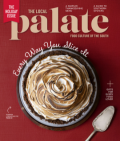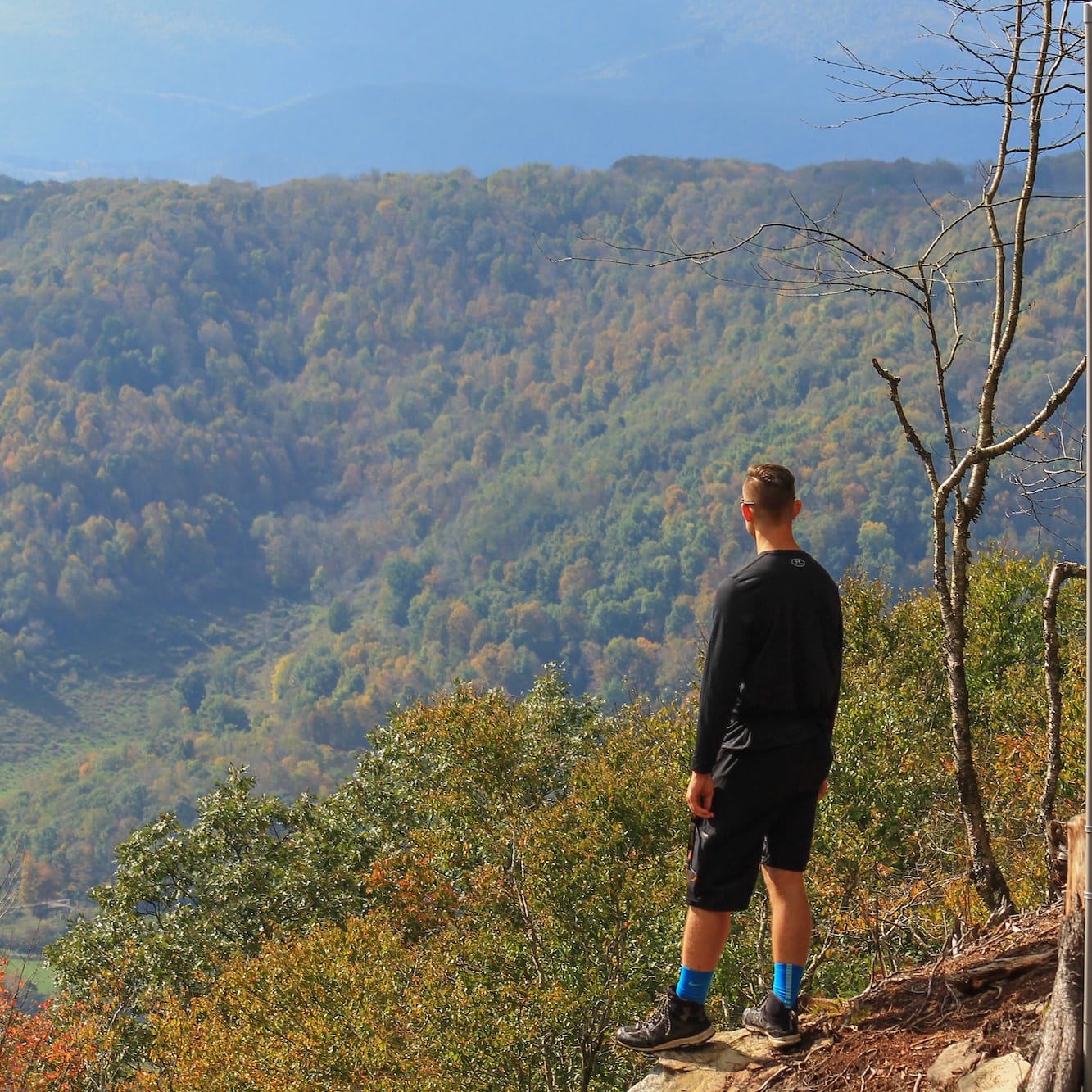In their home state of West Virginia, chef William Dissen and his father embark on a trout fishing journey and share a fire-roasted feast.
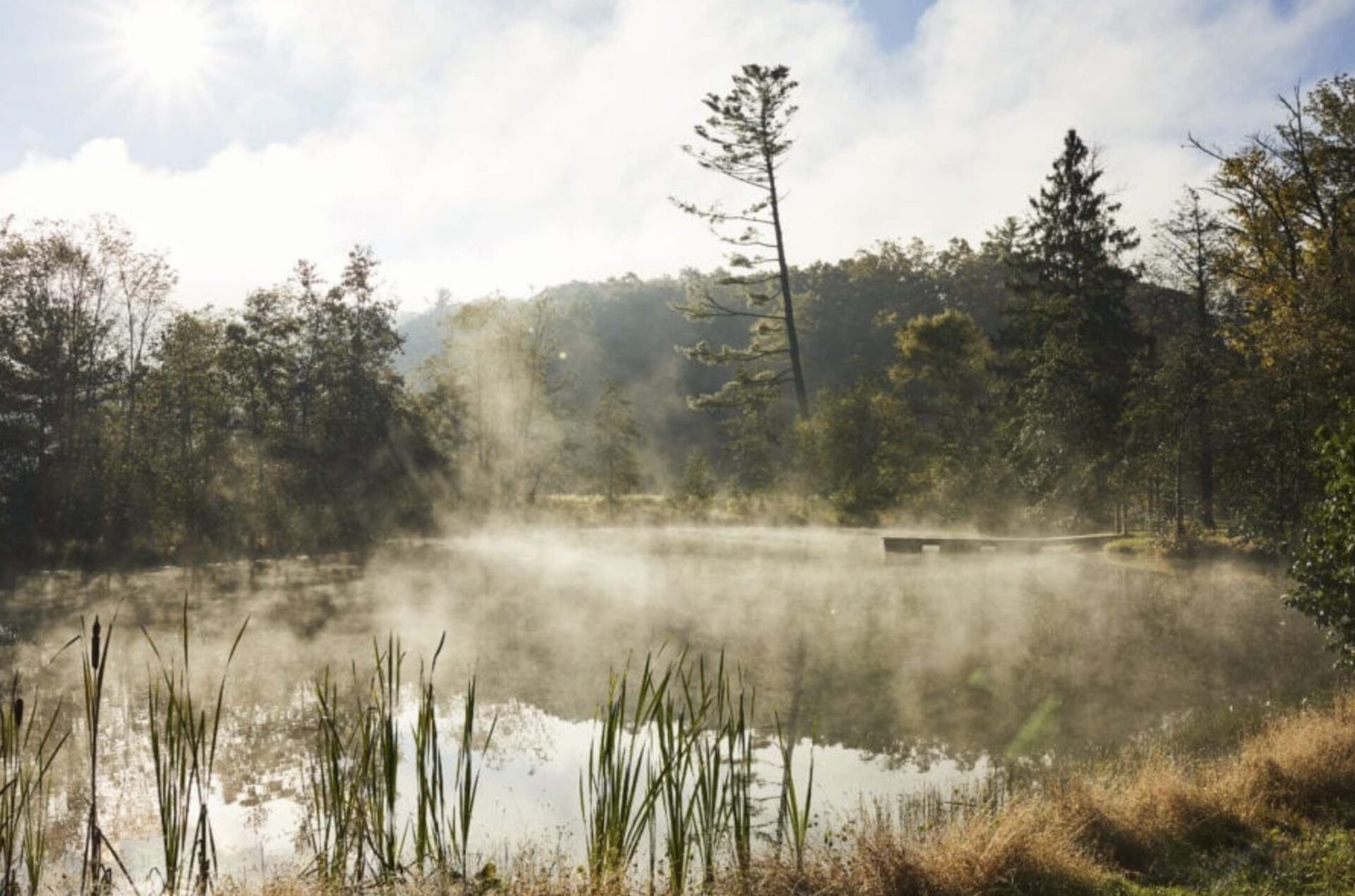
It’s a cold morning at The Greenbrier resort, the land spilling over 11,000 mountain-valley acres in White Sulphur Springs, West Virginia. Icy fingers of frost trace across the capacious lawns, fog collects in the shadows and lowland spots, and only the most faint sunbeams brighten the peaks of Greenbrier Mountain to the west. The thermometer reads at a chilling 28 degrees. Time to wade into a frigid stream for trout fishing.
Father-and-son fly fishers, Jim and William Dissen, suit up, confident that temps will hit 60 as the day wears on. The Greenbrier’s veteran outdoor guide, Jacob Ott, fits them for waders in the Hunt Cabin, a chinked log structure overlooking a pond where the ducks are stirring.
“This is the hardest part for me,” Jim laughs while fighting with his cumbersome, rubberized river gear. “I’ve held up pretty well at 77, but I think my warranty is running out.”
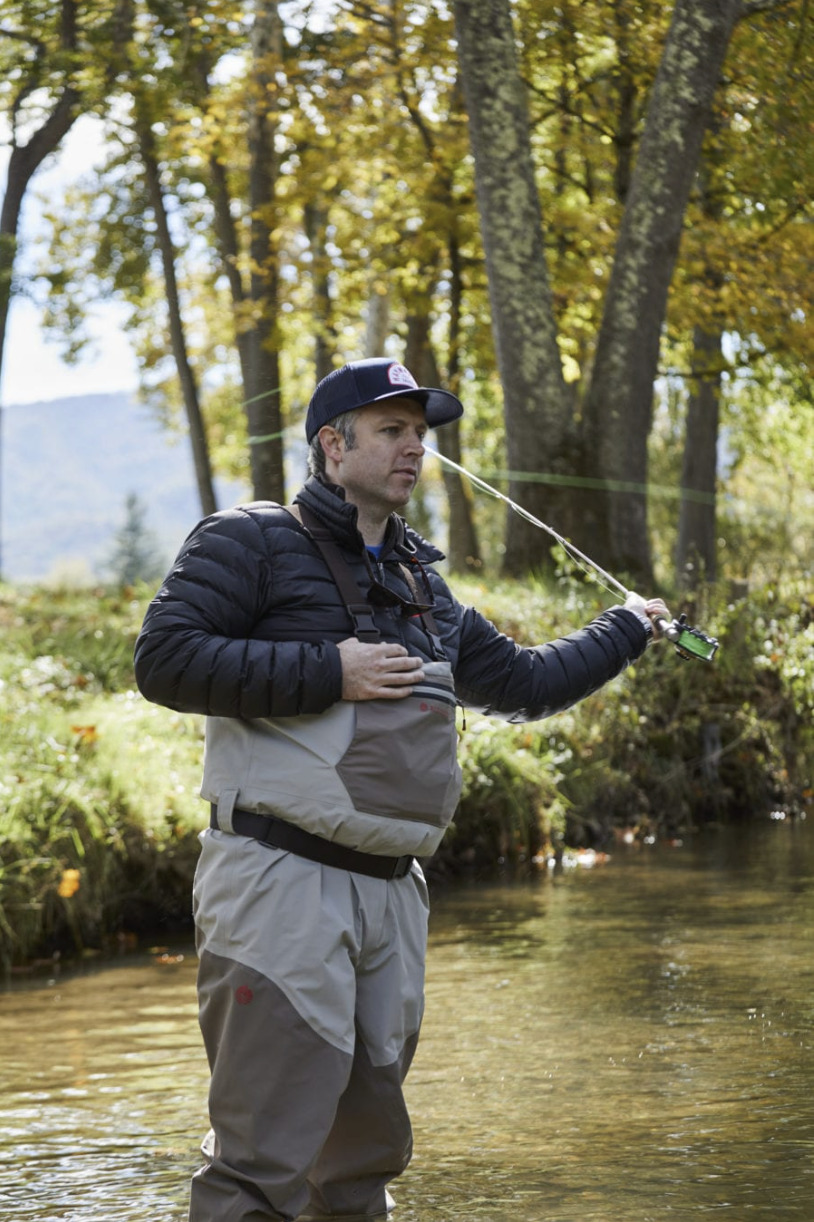
While Jim is retired, William balances a full plate as executive chef and owner of Asheville, North Carolina’s farm-to-table favorite, The Market Place since 2009. Following The Market Place in Asheville, he expanded eastward to open Haymaker in Uptown Charlotte, and the fresh-casual concept, Billy D’s Fried Chicken, at the North Carolina Zoo.
When he’s not at one of these outposts, he’s probably driving between them. Add two young children in the mix, and the result is a weary restaurateur and father for whom a quick trout fishing reprieve is well-deserved.
And there is further significance to this outing. While William’s career caravanned him through the states, his roots are in West Virginia. “This is home,” he says, sliding a leg into his ponderous waders. “It’s always good to come back here and spend time with family. Fishing is something my dad and I try to get out and do when we can.” The pair has had rod-and-reel adventures as far away as Montana, but William’s fondest memory is of boyhood when his dad helped him pull his first catch—a catfish—out of the Kanawha River flowing through the state capital and their hometown, Charleston. “Dad actually had it mounted for me,” he remembers.
His West Virginia roots also inform his cooking. While the terms “locally sourced,” “seasonal,” and “farm-to-table” are routinely splashed across menus today—William’s included—he internalized these concepts long before they were culinary buzzwords. It’s an approach to food that’s in his blood. “They lived off the land back in the holler in a very traditional, old-school Appalachia way,” William says of his grandparents. “They foraged for different ingredients—ginseng, mushrooms, ramps. They grew a large garden with bees for honey and pollinating. They had a cow for milk, a goat for a lawnmower, and chickens.”
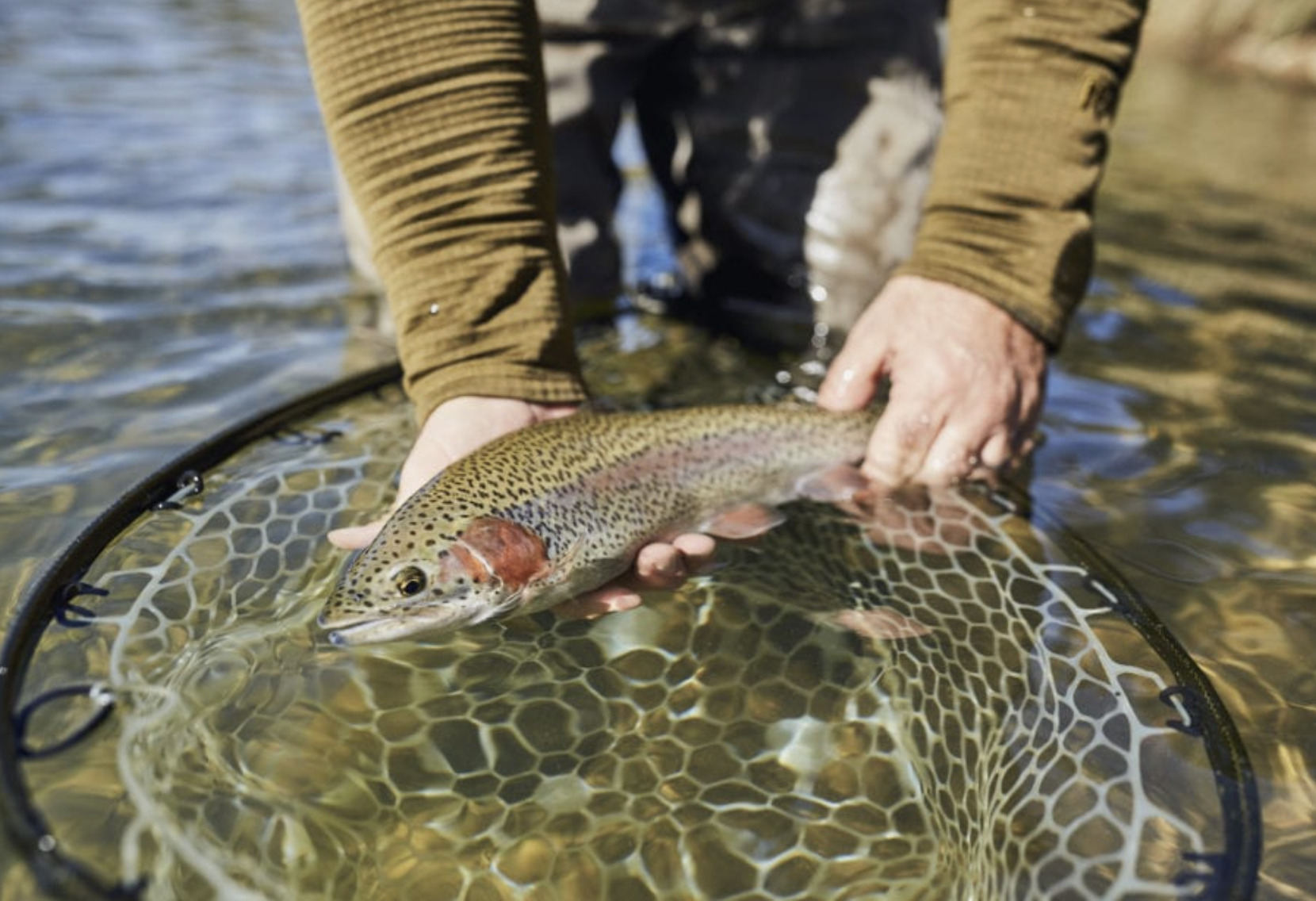
This nurtured William into a chef trained in classic techniques but who also embraces homespun Appalachian cookery. He’s born of “Generations survived by farming, hunting, and foraging.” And trout fishing. The first flies hit the water at half-past nine. Mist still cloaks the water and a Sycamore sends yellowed leaves circling lazily downward in the stillness. A startled kingfisher rattles off downstream; the air is perfumed by the wild mint trampled on the shoreline. The late morning sun burns off the mist and chases away the chill. Soon enough, the fishing warms up too.
“Got one!” William shouts, and after a brief tussle Ott nets a Rainbow trout with iridescent, gem-like skin. As this is a catch-and-release area, the finned beauty is but a temporary trophy in William’s hands. That suits him, because as someone who Fortune magazine twice named Green Chef of the Year, promoting sustainable seafood is one of his passions. Jim snags the next rainbow. “Mine is definitely bigger than William’s,” he says with playful braggadocio.
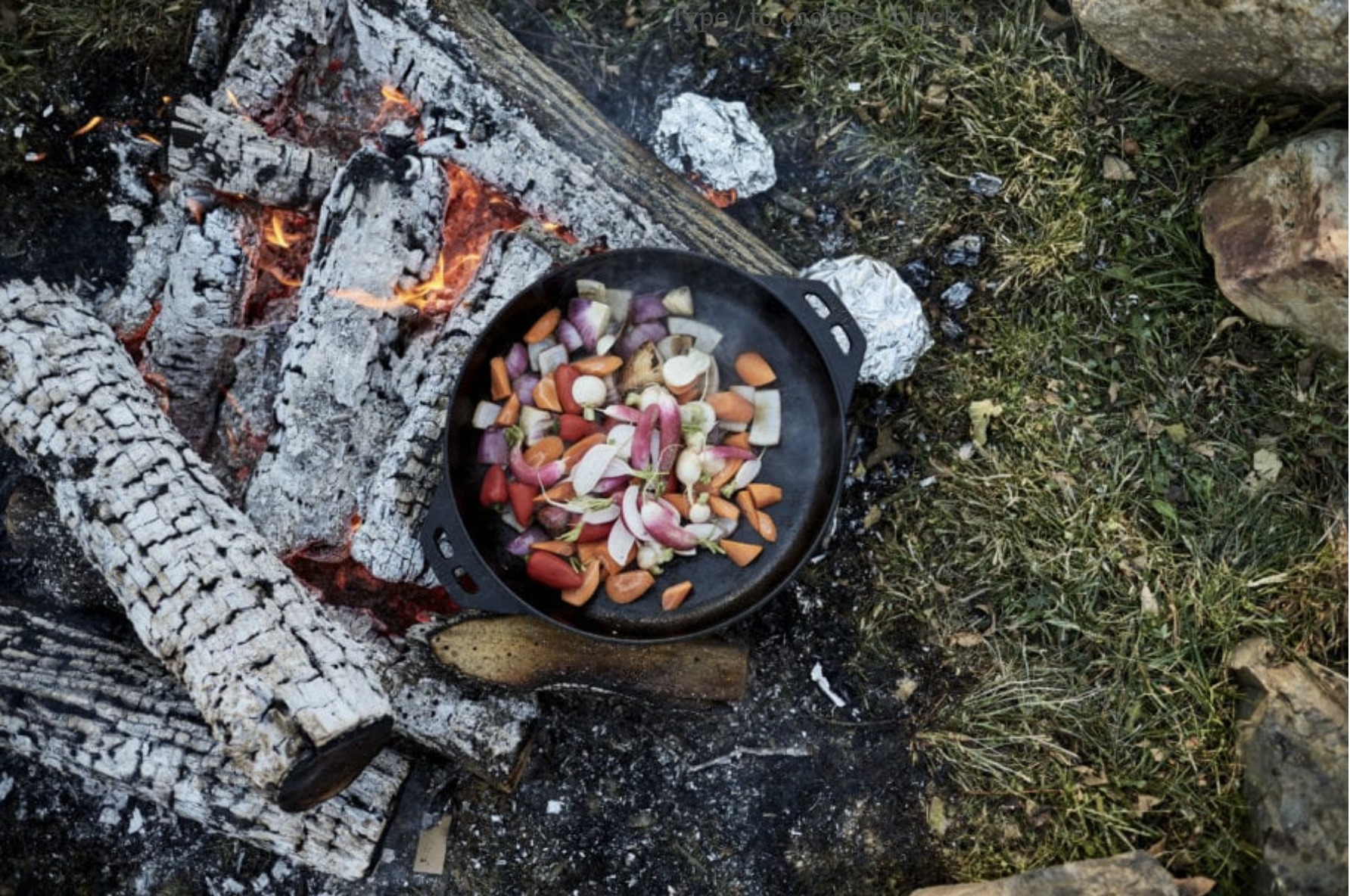
When the shadows lengthen, it’s time to pack it in. William starts a simple circle-of-stones fire pit for supper. He tosses country ham slices in a pair of cast-iron pans. Two trout from Sunburst Trout Farms—one of his go-to sources for sustainable fish—hit one pan, stuffed with lemon slices and thyme. A medley of veggies sings in the other. The heady aroma of wood smoke and sizzling ham fat is intoxicating. As a finishing touch, browned butter tops the trout, along with more thyme and whole garlic cloves. The roasted veggies are plated with a garnish of marigold petals to compliment an artful salad dominated by greens, purples, and pinks.
Silence reigns as everyone takes in the understated majesty of a West Virginia evening. “You know,” Jim says after a spell, “that one fish I had on the line must have been a 35-pounder. Biggest trout I’ve ever seen.” William looks up briefly from where he’s wiping out a cast-iron pan. He shakes his head ever so slightly and smiles. It’s good to be home.
A Fire-Fresh Meal for Father and Son

Roasted Beet and Smoked Trout Salad
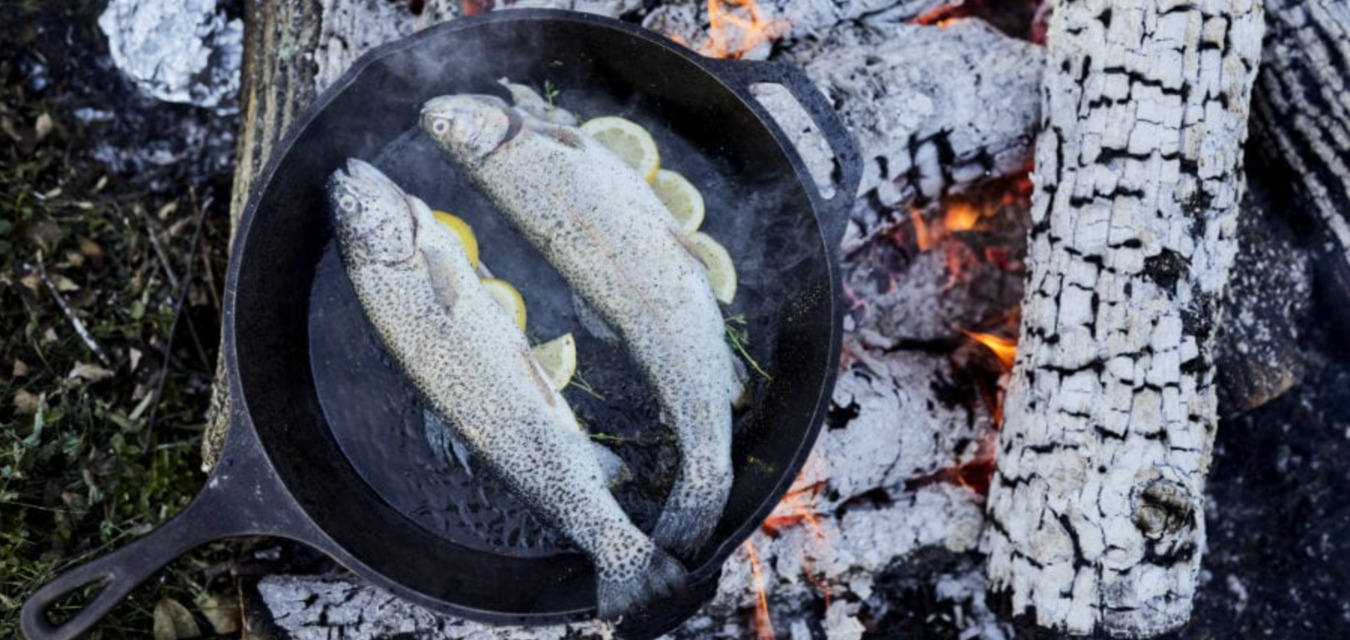
Pan-Roasted Trout
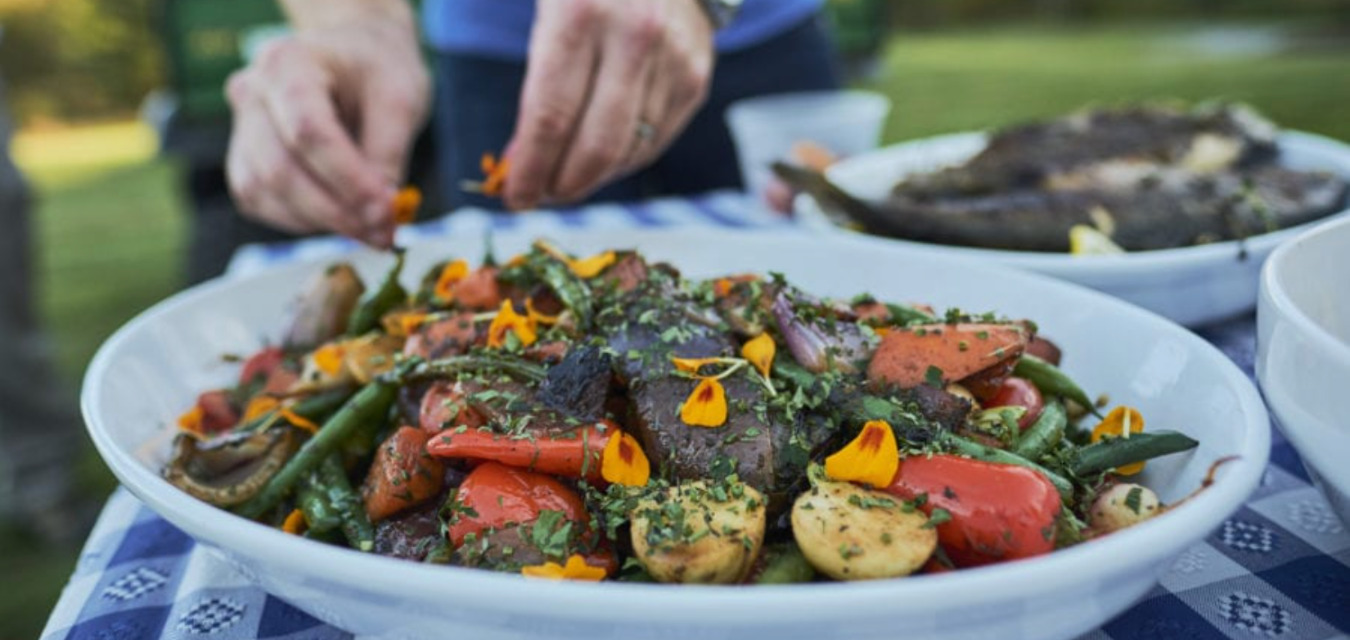
Cast-Iron Roasted Vegetables
Keep Reading
On the Road
7 Ways to Disconnect in West Virginia’s Great Outdoors
With nearly 50 state parks and forests, West Virginia’s great outdoors offer something for […]
In the Field
Hooked on Fisher’s
In South Alabama, Chef Bill Briand can’t get enough of the gulf’s bounty
Dining Out
New Restaurants in West Virginia
Contributor Jason Frye highlights traditional, modernized, and international takes on American classics with this […]
share
trending content
-
FINAL Vote for Your Favorite 2025 Southern Culinary Town
-
Get To Know Roanoke, Virginia
-
Shrimp and Grits: A History
by Erin Byers Murray -
New Myrtle Beach Restaurants Making Waves
-
FINAL VOTING for Your Favorite Southern Culinary Town
More From On the Road
-
Snapshot: Dupont Circle
-
Airport Restaurants with an Appetite for Flying
-
Road Trip Through West Virginia’s Pocahontas and Greenbrier Counties
-
Road Trip: Maryland to Virginia
-
A Year of Food in Louisiana | Listen
